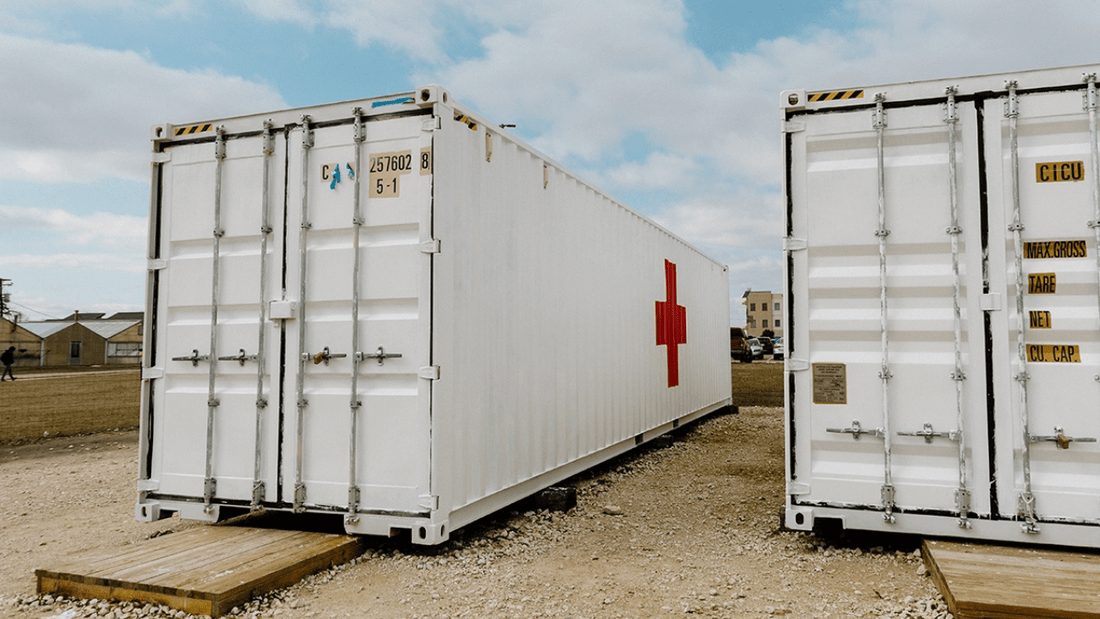
From Cargo to Care: Transforming Shipping Containers into Emergency Medical Centers
Share
When disaster strikes or healthcare access is limited, time is critical. The ability to deliver medical care quickly and effectively can make the difference in saving lives. In recent years, an innovative and highly practical solution has emerged: converting shipping containers into emergency medical centers.
These self-contained medical units structures are already changing the way humanitarian organizations, governments, and healthcare providers respond to crises, particularly in remote or underserved areas.
Why Shipping Containers?
Shipping containers may not seem like the obvious choice for a healthcare facility, but they offer a number of advantages. Designed to endure the harshest conditions, they’re wind- and water-resistant, structurally sound, and readily available in most parts of the world.
Because they follow standardized dimensions, they’re also easy to transport, stack, and configure in different ways—making them ideal building blocks for modular medical facilities that can be deployed quickly and scaled up as needed.
Key Advantages of Container-Based Clinics
1. Rapid Deployment: One of the biggest challenges in emergency medical response is speed. Traditional construction takes time—time that people in crisis situations often don’t have. Shiping container clinics can be outfitted off-site and delivered to the field fully equipped. Once on the ground, they can be operational within hours.
2. Built for Tough Environments: Shipping containers are made to withstand rough handling and extreme weather. Whether deployed in flood zones, desert climates, or post-conflict regions, they can offer safe and stable environments for both patients and healthcare workers.
3. Modular and Customizable: These units are highly adaptable. Multiple shipping containers can be connected or stacked to create larger, more complex facilities. A single container can function as a triage room, operating theater, pharmacy, or isolation ward. This modularity allows teams to design healthcare facilities that are tailored to specific community needs or emergency scenarios.
4. Cost-Effective Construction: Compared to building a permanent hospital or clinic, repurposing shipping containers significantly reduces both material and labor costs. Many governments and NGOs view this as a sustainable investment, especially in regions where financial and logistical resources are limited.
Interior Design Meets Medical Function
While the exterior may look industrial, the interior of a container medical unit is anything but. These clinics can be outfitted with insulation, climate control, clean water systems, medical-grade surfaces, and essential diagnostic and treatment equipment. A well-designed shipping container clinic might include:
-
Examination rooms and patient beds
-
Running water and sanitation facilities
-
Medical refrigerators and secure storage for supplies
-
Ventilation systems and HEPA filters for infection control
-
Solar panels and battery backups for off-grid operation
-
Telemedicine capabilities via satellite or mobile internet
Each unit is carefully planned to maximize efficiency and safety while maintaining a clean and welcoming environment for patients.
Real-World Impact
Organizations like Doctors Without Borders (Médecins Sans Frontières), the World Health Organization, and the International Red Cross have successfully deployed shipping container-based clinics in crisis zones around the world. During the Ebola outbreaks in West Africa, these units served as isolation wards. During the COVID-19 pandemic, they were used for testing, vaccination, and triage in high-risk areas.
In the United States and Europe, some municipalities and nonprofit healthcare providers have turned to shipping container clinics to serve rural communities, unhoused populations, and areas with aging or insufficient healthcare infrastructure.
Even in urban settings, shipping containers offer creative solutions. Cities facing land scarcity are exploring vertical clinic models using stacked shipping containers, while mobile units are being used to expand access to healthcare services in underserved neighborhoods.
Sustainability and Long-Term Potential
As global focus shifts toward sustainable and resilient infrastructure, shipping container clinics fit the bill. Many designs incorporate eco-conscious features like rainwater collection, composting toilets, and solar energy systems—minimizing their environmental footprint and enabling continued operation in off-grid areas.
More importantly, these units are reusable. Once a mission ends, they can be deployed to the next location. This makes them not only cost-effective but also adaptable to a wide range of ongoing healthcare challenges, from pandemic response to routine primary care.
Looking Ahead
The transformation of shipping containers into emergency medical centers is more than a clever reuse of surplus materials. It’s a reflection of how innovation, necessity, and sustainability can come together to solve real-world problems. These compact, durable units are helping bridge the gap between urgent need and medical response—especially in places where traditional solutions fall short.
Fill out the form below for a free shipping container quote from USA Containers:
